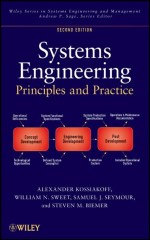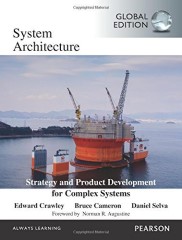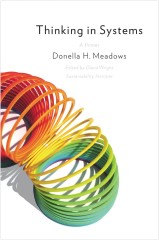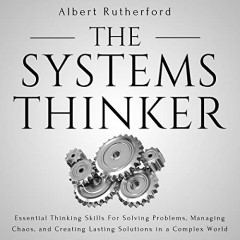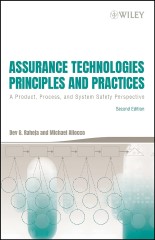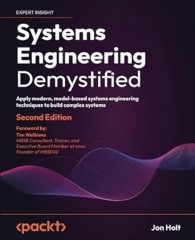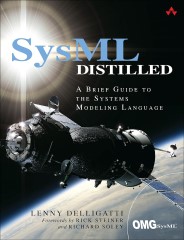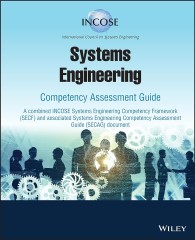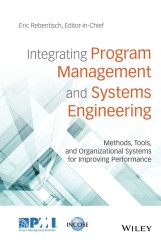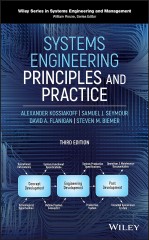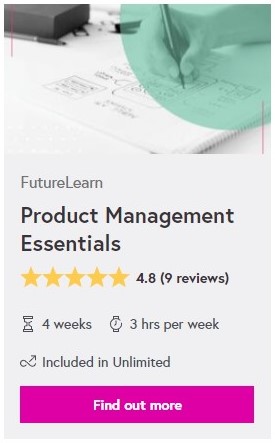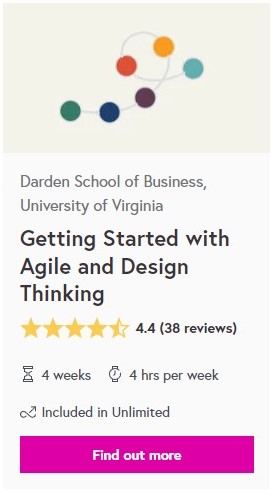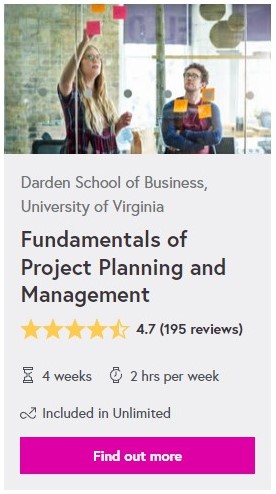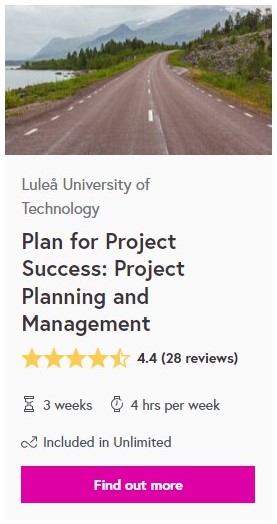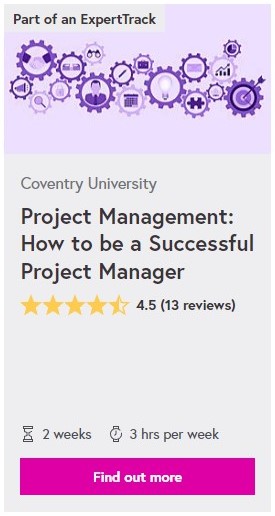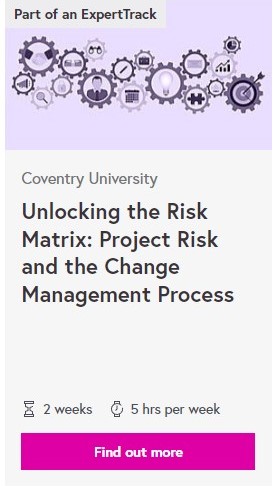Not all project uncertainties are created equal—so why do we manage them the same way?
Picture this: You’re six months into a critical digital transformation project when suddenly, a key vendor announces they’re discontinuing the software platform you’ve built your entire architecture around. This wasn’t in your risk register. It wasn’t even on your radar. Meanwhile, your meticulously maintained list of “risks” includes items like “team members might get sick” and “meetings might run over time”—risks so generic they appear in every project since the dawn of project management.
This scenario plays out in organizations worldwide, highlighting a fundamental challenge in modern project management: our traditional approaches to tracking and managing project uncertainties are failing to keep pace with the complexity of today’s projects. While we’ve become excellent at creating comprehensive lists, we’re often tracking the wrong things, in the wrong way, at the wrong time.
The alphabet soup of project management frameworks—RAID, RAIDOC, ACD, R&O—represents the evolution of our thinking about uncertainty management. Yet for many project managers, these acronyms remain a source of confusion rather than clarity. Which framework should you use? When should you track assumptions versus constraints? Is it better to maintain separate registers or integrate everything into one comprehensive log? And perhaps most importantly: how do you ensure that whatever approach you choose actually improves project outcomes rather than just creating more administrative overhead?
This comprehensive guide aims to demystify these frameworks and provide practical guidance for selecting and implementing the right approach for your projects. We’ll explore not just what each framework contains, but why it matters, when to use it, and how to implement it effectively. Whether you’re managing a small team delivering an internal system upgrade or orchestrating a multi-year, multi-vendor transformation program, you’ll find actionable insights to enhance your project’s success rate.
By the end of this article, you’ll understand:
- The critical differences between RAID, ACD, R&O, and other uncertainty management frameworks
- How to assess which framework (or combination) best suits your project’s needs
- Practical implementation strategies that your team will actually adopt and maintain
- Why the trend toward integrated approaches like RAIDOC might—or might not—be right for you
- How to measure the effectiveness of your uncertainty management approach
Most importantly, you’ll learn how to move beyond compliance-driven checkbox exercises to create living, breathing tools that genuinely improve project decision-making and outcomes.
Recommended Further Reading Amazon BooksTable of Contents
- I. The Evolution of Project Uncertainty Management
- II. Understanding the Core Frameworks
- III. The Case for Integration: RAIDOC
- IV. Choosing the Right Framework: A Decision Guide
- V. Implementation Roadmap
- VI. Measuring Success
- VII. Future Trends and Technologies
- VIII. Conclusion and Call to Action
- IX. Supplementary Materials
I. The Evolution of Project Uncertainty Management
A. Historical Context
Project management, as a formal discipline, emerged from the aerospace and construction industries of the 1950s and 1960s. Early practitioners quickly recognized that managing uncertainties—particularly risks—was crucial to project success. The first risk registers were simple lists, often maintained on paper or basic spreadsheets, focusing primarily on technical risks that could impact project delivery.
By the 1980s, as projects became more complex and interconnected, the limitations of standalone risk registers became apparent. Project managers found themselves juggling multiple lists: risk registers, issue logs, assumption lists, and dependency matrices. Each list was maintained separately, often by different team members, with little coordination or cross-referencing. The result? Critical connections were missed, redundant efforts proliferated, and project managers spent more time managing their management tools than managing their projects.
The 1990s brought the first attempts at integration. The RAID framework emerged from the IT industry, where project interdependencies were becoming increasingly complex. By combining Risks, Assumptions, Issues, and Dependencies into a single log, project managers could finally see the connections between different types of uncertainties. An assumption in one area could create a risk in another; a dependency might hide multiple embedded assumptions; an unresolved issue could cascade into numerous risks.
This integration represented more than just administrative efficiency—it reflected a fundamental shift in how we think about project uncertainty. Rather than treating different types of uncertainties as separate phenomena, we began to understand them as interconnected aspects of a single, complex system.
B. The Cost of Poor Uncertainty Management
The statistics are sobering. According to the Project Management Institute’s 2023 Pulse of the Profession report, organizations waste an average of $122 million for every $1 billion invested due to poor project performance. While not all failures can be attributed to uncertainty management, post-project reviews consistently identify unmanaged risks, invalid assumptions, and unrecognized dependencies as primary contributors to project failure.
Consider the case of the UK’s NHS National Programme for IT, one of the most expensive project failures in history. Launched in 2002 with a budget of £2.3 billion, the program was effectively abandoned in 2011 after spending over £12 billion. Among the many factors contributing to its failure were:
- Unvalidated Assumptions: The program assumed that disparate NHS trusts would readily adopt standardized systems, ignoring deep-rooted cultural and operational differences
- Ignored Constraints: Technical constraints around data integration were minimized during planning, leading to massive scope creep as reality set in
- Missed Dependencies: Critical dependencies between local system implementations and national infrastructure rollout were poorly mapped and managed
- Unresolved Issues: Early implementation issues were logged but not effectively resolved, creating a cascade of problems as the program scaled
On a smaller scale, similar patterns repeat across industries. A 2022 KPMG study found that 70% of organizations had experienced at least one project failure in the previous 12 months. When examining root causes, researchers found that:
- 65% of failures involved risks that were identified but poorly managed
- 58% stemmed from assumptions that were never validated
- 47% involved dependencies that were recognized too late
- 41% escalated from issues that were logged but not resolved in a timely manner
Perhaps more tellingly, the study found that organizations with integrated uncertainty management approaches—those using frameworks like RAID or RAIDOC—reported 32% fewer project failures and 28% better schedule adherence than those using separate registers.
C. The Modern Project Environment
Today’s projects operate in an environment of unprecedented complexity. Digital transformation initiatives span entire organizations, touching every department and system. Supply chains stretch across continents, creating webs of dependencies that can be disrupted by events halfway around the world. Stakeholder ecosystems include not just direct clients and team members, but regulators, partners, suppliers, and increasingly vocal end-users who expect transparency and regular updates.
This complexity manifests in several ways that traditional uncertainty management approaches struggle to address:
Velocity of Change: In traditional construction or manufacturing projects, major changes might occur monthly or quarterly. In today’s digital projects, significant changes can happen daily. A cloud provider updates its API, a regulatory body issues new guidance, a key technology reaches end-of-life—each change ripples through project assumptions and dependencies at unprecedented speed.
Interconnectedness: Modern projects rarely exist in isolation. A seemingly simple software upgrade might depend on infrastructure changes, which require security reviews, which need compliance approvals, which depend on vendor certifications. These chains of dependencies create fragility that single-dimensional risk registers simply cannot capture.
Stakeholder Expectations: The era of quarterly steering committee updates is over. Today’s stakeholders expect real-time visibility into project health, including risks, issues, and decision points. They want dashboards, not documents; insights, not inventories. This demands uncertainty management approaches that can provide instant, integrated views of project health.
Regulatory and Compliance Pressure: From GDPR to SOX, from industry-specific regulations to ESG requirements, projects must navigate an increasingly complex compliance landscape. This creates layers of constraints and assumptions that must be actively managed throughout the project lifecycle.
The traditional response to this complexity has been to create more lists, more registers, more tracking mechanisms. But this approach has reached its limits. Project managers report spending up to 40% of their time on administrative tasks, much of it maintaining multiple overlapping registers. Team members suffer from “update fatigue,” grudgingly providing the minimum information required to check the box.
What’s needed is not more tracking, but smarter tracking. This is where evolved frameworks like RAID, ACD, R&O, and RAIDOC come into play. Each represents a different philosophy about what to track and how to track it, optimized for different project contexts and organizational needs.
The journey from simple risk registers to integrated uncertainty management frameworks reflects our growing understanding of project complexity. As we’ll explore in the following sections, choosing the right framework—and implementing it effectively—can mean the difference between project success and joining the sobering statistics of project failure.
Summary Table: Framework Comparison
| Framework | Primary Focus | Best Used For | Key Strengths | Potential Limitations |
|---|---|---|---|---|
| RAID | Comprehensive uncertainty management | Complex projects with multiple uncertainties | • Integrated view of project uncertainties • Flexible (can adapt A and D) • Widely recognized and adopted | • Can become unwieldy for simple projects • Requires discipline to maintain • May create information overload |
| ACD | Planning within boundaries | Constrained environments, systems engineering | • Excellent for regulatory projects • Forces realistic planning • Clarifies project boundaries | • Less emphasis on risk management • May discourage innovation • Limited execution focus |
| R&O | Balanced risk-opportunity management | Strategic initiatives, innovation projects | • Promotes positive thinking • Quantifies upside potential • Aligns with business value | • Requires cultural shift • Opportunity quantification challenging • May downplay serious risks |
| Issues Register | Operational problem resolution | Service delivery, production support | • Simple and focused • Clear accountability • Rapid resolution focus | • Reactive, not proactive • No strategic planning element • Misses interconnections |
II. Understanding the Core Frameworks
A. RAID: The Foundation Framework
1. Definition and Components
RAID represents the most widely adopted integrated approach to uncertainty management in project management. At its core, RAID tracking acknowledges that project uncertainties don’t exist in isolation—they interact, overlap, and influence each other in complex ways.
Risks: Anticipating What Could Go Wrong (and Right)
Risks are potential events or conditions that, if they occur, could impact project objectives positively or negatively. While traditionally focused on threats, modern risk management increasingly recognizes positive risks (opportunities) as equally important. Effective risk tracking includes:
- Risk Description: Clear, specific statements of what might happen
- Probability Assessment: Likelihood of occurrence (typically rated Low/Medium/High or as percentages)
- Impact Analysis: Potential effect on schedule, budget, scope, or quality
- Risk Response Strategy: Mitigate, avoid, transfer, accept, or exploit (for positive risks)
- Risk Owner: Individual accountable for monitoring and response
- Trigger Indicators: Early warning signs that a risk is materializing
Assumptions: What We Believe to Be True
Assumptions are factors we accept as true, real, or certain without proof. They form the foundation of project planning but carry inherent risk if proven incorrect. Well-managed assumptions include:
- Assumption Statement: Explicit declaration of what is assumed
- Criticality Rating: Impact if the assumption proves false
- Validation Method: How and when the assumption will be verified
- Owner: Person responsible for validation
- Fallback Plan: Alternative approach if assumption proves invalid
Issues: Current Problems Requiring Resolution
Issues are risks that have materialized or problems that have emerged during project execution. Unlike risks, issues are certain—they’re happening now and demand immediate attention. Comprehensive issue tracking captures:
- Issue Description: Clear statement of the problem
- Severity Level: Impact on project objectives
- Root Cause: Underlying factors creating the issue
- Resolution Plan: Specific actions to address the issue
- Target Resolution Date: When the issue must be resolved
- Escalation Path: Who to involve if resolution stalls
Dependencies: Critical Relationships and Linkages
Dependencies represent relationships between project elements where one element relies on another. These can be internal (within the project) or external (outside project control). Effective dependency management tracks:
- Dependency Type: Mandatory, discretionary, or external
- Predecessor/Successor: What depends on what
- Lead/Lag Time: Timing relationships between dependent elements
- Criticality: Impact if dependency is not met
- Dependency Owner: Person managing the relationship
- Contingency Plan: Alternative if dependency fails
2. Variations in Practice
The flexibility of RAID has led to several variations, each emphasizing different aspects of project uncertainty:
Actions vs. Assumptions
Some organizations replace Assumptions with Actions, creating a more task-oriented framework. This variation works well in:
- Operational environments with established processes
- Projects with well-understood requirements
- Teams that struggle with abstract assumption management
Actions in this context represent specific tasks that must be completed to address risks, resolve issues, or manage dependencies. Each action includes an owner, due date, and clear success criteria.
Decisions vs. Dependencies
Another common variation substitutes Decisions for Dependencies, particularly useful in:
- Governance-heavy environments
- Projects with multiple stakeholder groups
- Situations requiring extensive audit trails
Decision tracking captures not just what was decided, but who made the decision, when, based on what information, and what alternatives were considered. This creates valuable organizational memory and supports future projects.
When to Use Which Variation
Choose traditional RAID (with Assumptions and Dependencies) when:
- Starting new, innovative projects with many unknowns
- Working in complex, interconnected environments
- Managing multiple external dependencies
- Dealing with significant technical or market uncertainty
Opt for Actions-based RAID when:
- Running operational or maintenance projects
- Working with teams new to formal project management
- Focusing on execution rather than planning
- Managing projects with clear, stable requirements
Select Decisions-based RAID when:
- Operating in regulated industries
- Managing projects with significant governance requirements
- Building organizational knowledge bases
- Working in environments with frequent audits
3. Implementation Best Practices
Setting Up Your First RAID Log
- Start Simple: Begin with a basic spreadsheet containing core fields only. Avoid the temptation to track everything from day one.
- Define Clear Criteria: Establish what qualifies as a risk versus an issue, how to rate probability and impact, and when assumptions require validation.
- Assign Clear Ownership: Every item needs a single, named owner—not a team or department.
- Establish Review Cadence: Weekly team reviews for issues and actions, bi-weekly for risks and dependencies, monthly for assumptions.
- Create ID System: Use unique identifiers (R001, A001, I001, D001) to enable cross-referencing.
Common Pitfalls to Avoid
- Generic Entries: “Resource availability” is not a useful risk. “Key developer Jane Smith may be reassigned to Project Y in March” is specific and actionable.
- Orphaned Items: Items without owners quickly become irrelevant
- Set-and-Forget Syndrome: RAID logs must be living documents, regularly updated and reviewed
- Probability Paralysis: Don’t spend hours debating whether a risk is 60% or 70% likely—focus on response strategies
- Issue Hoarding: Resolve and close issues; don’t let them accumulate indefinitely
Tools and Templates
While specialized tools exist, most teams succeed with:
- Spreadsheets: Excel or Google Sheets for smaller projects
- Project Management Software: MS Project, Smartsheet, or Monday.com for integration
- Specialized Tools: Risk Register, Resolver, or Active Risk Manager for enterprise needs
B. ACD: The Planning-Focused Approach
1. When Constraints Matter Most
The ACD (Assumptions, Constraints, Dependencies) framework emerged from systems engineering, where understanding limitations is often more critical than identifying risks. Constraints in ACD aren’t problems to solve—they’re boundaries within which solutions must be found.
Regulatory Environments
In pharmaceutical, financial services, or healthcare projects, regulatory constraints often define project boundaries more rigidly than any technical limitation. ACD excels here because it:
- Forces explicit documentation of regulatory boundaries
- Links assumptions directly to regulatory requirements
- Maps dependencies between regulatory approvals and project phases
Fixed-Budget Projects
When budget is truly non-negotiable, ACD’s constraint focus helps teams:
- Design solutions within financial boundaries
- Make trade-offs visible and explicit
- Avoid scope creep by constantly referencing constraints
Technical Limitations
Legacy system integration, infrastructure limitations, or technology constraints often define project realities. ACD helps by:
- Documenting technical boundaries clearly
- Preventing assumption of capabilities that don’t exist
- Mapping dependencies between technical components
2. The Power of Constraint Management
Constraints often spark innovation. By explicitly documenting and embracing limitations, teams can:
Turn Limitations into Design Parameters
Example: A financial services firm faced a constraint that customer data could not leave their country. Rather than seeing this as a limitation, they designed a pioneering edge computing solution that processed data locally while providing global analytics—creating a competitive advantage from a constraint.
Use Constraints to Drive Innovation
The Apollo 13 mission provides a famous example: the constraint of only using materials available on the spacecraft led to innovative solutions that saved the crew. In project management, similar constraint-driven innovation occurs when teams:
- Document constraints explicitly
- Challenge assumptions about what’s possible within constraints
- Brainstorm solutions that work within, not around, limitations
3. ACD in Practice
Systems Engineering Applications
Large defense contractors have used ACD for decades, particularly in:
- Aircraft design where weight constraints drive every decision
- Satellite systems where power constraints define capabilities
- Military systems where interoperability constraints shape architecture
Infrastructure Projects
Major infrastructure projects benefit from ACD’s focus on constraints:
- Bridge projects where geological constraints define possible designs
- Rail systems where right-of-way constraints shape routing decisions
- Airport expansions where noise constraints limit options
Regulatory Compliance Projects
GDPR implementation projects across Europe demonstrated ACD’s value:
- Privacy constraints shaped system architectures
- Data locality assumptions required validation
- Dependencies between national implementations required careful management
C. R&O: The Balanced Perspective
1. Opportunities as “Positive Risks”
The R&O (Risks and Opportunities) framework represents a philosophical shift from threat-focused to value-focused project management. By treating opportunities with the same rigor as risks, organizations can:
Shift from Threat-Only Thinking
Traditional risk management asks, “What could go wrong?” R&O management also asks, “What could go better than planned?” This balanced approach:
- Encourages proactive opportunity seeking
- Balances defensive and offensive project strategies
- Creates more engaged, optimistic project teams
Quantify Upside Potential
Just as risks have probability and impact, opportunities can be quantified:
- Probability: Likelihood the opportunity will materialize
- Value: Potential benefit in time, cost, or quality
- Enhancement Strategy: Actions to increase probability or value
- Capture Plan: How to realize the benefit if opportunity occurs
2. Financial and Strategic Applications
Portfolio Management
Investment firms use R&O to balance portfolios:
- Tracking both downside risks and upside opportunities
- Allocating resources to opportunity capture, not just risk mitigation
- Creating balanced scorecards showing risk-adjusted returns
Strategic Planning
Corporate strategy teams employ R&O for:
- Market entry decisions weighing risks against opportunities
- Technology investments balancing obsolescence risks with competitive advantages
- Partnership decisions considering both risks and synergies
Innovation Projects
R&D organizations find R&O particularly valuable:
- Tracking technical risks alongside breakthrough possibilities
- Balancing failure risks with learning opportunities
- Managing portfolio risk while pursuing moonshot opportunities
3. Creating an Opportunity-Aware Culture
Encouraging Opportunity Identification
Organizations successfully using R&O often:
- Include “opportunity spotting” in project kickoffs
- Celebrate captured opportunities as much as avoided risks
- Train teams to see possibilities, not just problems
Reward Systems for Opportunity Capture
Progressive organizations link rewards to opportunity management:
- Bonuses for identified and captured opportunities
- Recognition programs for innovative opportunity enhancement
- Career advancement for those who balance risk and opportunity
D. Issues Registers: The Tactical Tool
1. Real-Time Problem Management
Issues registers remain valuable as standalone tools in operational environments where immediate problem resolution trumps strategic planning.
Incident Tracking
IT service desks demonstrate pure issue management:
- Real-time logging of problems as they occur
- Clear escalation paths based on severity
- Service level agreements driving resolution timeframes
- Knowledge base integration for common issues
Resolution Workflows
Effective issue management requires:
- Triage Process: Quickly assessing severity and impact
- Assignment Logic: Routing to appropriate resolvers
- Status Tracking: Clear visibility of progress
- Resolution Verification: Confirming issues are truly resolved
Escalation Procedures
Well-designed escalation ensures issues don’t stagnate:
- Time-based triggers (unresolved after X hours)
- Impact-based escalation (severity increases)
- Stakeholder escalation (customer complaints)
- Technical escalation (expertise required)
2. Integration with Other Frameworks
When Risks Become Issues
The transition from risk to issue is critical:
- Risk triggers should automatically create issues
- Issue resolution should update risk registers
- Patterns in issues should inform future risk identification
Issue Pattern Analysis
Mining issue data reveals:
- Recurring problems suggesting systemic risks
- Root causes requiring strategic intervention
- Process improvements to prevent future issues
- Training needs based on issue types

III. The Case for Integration: RAIDOC
A. Why RAIDOC Emerged
The emergence of RAIDOC (Risks, Assumptions, Issues, Dependencies, Opportunities, Constraints) represents the natural evolution of project uncertainty management. Born from the systems engineering world, where complex interdependencies and strict constraints define every decision, RAIDOC addresses the fundamental limitation of earlier frameworks: they force artificial separation of naturally connected elements.
Systems Engineering Requirements
In aerospace and defense projects, systems engineers discovered that:
- Constraints often create risks and close off opportunities
- Opportunities might depend on specific assumptions being true
- Issues frequently arise from unrecognized constraints
- Dependencies hide embedded assumptions and risks
Consider the development of a satellite system. A weight constraint (every kilogram costs $10,000 to launch) creates risks (component failure due to miniaturization), requires assumptions (launch vehicle availability), generates issues (integration challenges), involves dependencies (on supplier capabilities), while also creating opportunities (innovative lightweight materials that could revolutionize other products).
Tracking these elements separately meant critical connections were missed. Engineers found themselves constantly cross-referencing multiple documents, holding redundant meetings, and still missing crucial interdependencies.
Need for Comprehensive Tracking
Modern projects operate in an environment where:
- Velocity: Changes happen faster than separate registers can be updated
- Complexity: Interconnections between elements are often more important than the elements themselves
- Compliance: Auditors expect comprehensive, integrated documentation
- Scale: Large programs may have thousands of tracked items across categories
RAIDOC emerged as a response to these pressures, providing a single, integrated view of all project uncertainties and constraints.
Stakeholder Demand for Single Source of Truth
Executive stakeholders increasingly demand:
- One place to understand project health
- Clear visibility of interconnections
- Reduced meeting time reviewing multiple registers
- Confidence that nothing falls between the cracks
RAIDOC delivers this by creating a unified framework where a single review session can cover all aspects of project uncertainty.
B. Benefits of the Integrated Approach
1. Operational Efficiency
Reduced Administrative Overhead
Organizations implementing RAIDOC report:
- 40% reduction in time spent updating registers
- 35% fewer meetings required for comprehensive reviews
- 50% less time reconciling overlapping information
- 60% faster onboarding for new team members
Example: A major infrastructure project reduced weekly uncertainty management overhead from 47 person-hours (across multiple registers and meetings) to 18 person-hours with RAIDOC implementation.
Streamlined Reporting
RAIDOC enables:
- Single dashboard views of project health
- Automated rollup reports for executives
- Clear traceability between related items
- Simplified audit trails
Single Review Meetings
Instead of separate meetings for:
- Monday: Risk review (1 hour)
- Tuesday: Issue triage (1 hour)
- Wednesday: Dependency check (30 minutes)
- Thursday: Constraint review (30 minutes)
- Friday: Opportunity session (45 minutes)
Teams can hold one comprehensive review:
- Thursday: RAIDOC review (2 hours total)
This 40% time saving allows more focus on resolution rather than review.
2. Better Decision-Making
Holistic View of Project Health
RAIDOC reveals patterns invisible in separated frameworks:
- Risk clusters around specific constraints
- Assumption failures driving multiple issues
- Dependencies creating risk concentrations
- Opportunities constrained by unvalidated assumptions
Cross-Impact Visibility
The integrated view makes connections explicit:
- A new constraint immediately shows affected risks and opportunities
- Issue patterns reveal underlying assumption problems
- Dependency changes highlight risk cascades
- Opportunity capture might require constraint relaxation
Integrated Risk-Opportunity Assessment
RAIDOC enables sophisticated analyses:
- Net risk position (threats minus opportunities)
- Constraint-adjusted opportunity values
- Risk-weighted dependency paths
- Assumption sensitivity analysis
Example: A pharmaceutical company discovered that relaxing a single constraint (allowing offshore data processing) could capture three major opportunities while actually reducing overall risk through redundancy—an insight invisible when tracking elements separately.
C. Implementation Challenges and Solutions
Change Management Considerations
The shift to RAIDOC faces predictable resistance:
Challenge: “We’ve always done it this way” Solution: Pilot with willing early adopters, demonstrate time savings, then expand
Challenge: “It’s too complex for our team” Solution: Phased implementation—start with RAID, add O and C gradually
Challenge: “Our tools don’t support it” Solution: Begin with enhanced spreadsheets, upgrade tools once value is proven
Challenge: “Different departments own different registers” Solution: Create integration role, maintain departmental views of unified data
Tool Selection and Customization
RAIDOC tool requirements:
- Flexible categorization: Items may fit multiple categories
- Relationship mapping: Visual links between related items
- View customization: Different stakeholders need different perspectives
- Integration capability: Import from existing registers
- Scalability: Handle hundreds to thousands of items
Leading solutions include:
- Enterprise: ServiceNow, SAP Risk Management, Oracle Risk Management Cloud
- Mid-market: Resolver, Active Risk Manager, Predict!
- Entry-level: Customized SharePoint, Smartsheet, advanced Excel templates
Training Requirements
Successful RAIDOC implementation requires:
Week 1 Training (All Team):
- RAIDOC concepts and benefits (2 hours)
- Tool basics and navigation (2 hours)
- Practice with real project examples (4 hours)
Week 2-3 Training (Register Owners):
- Advanced tool features (4 hours)
- Integration techniques (4 hours)
- Reporting and analytics (4 hours)
Ongoing Support:
- Weekly clinics first month
- Monthly refreshers first quarter
- Quarterly advanced topics
Organizations report 3-4 weeks to basic proficiency, 2-3 months to full adoption.
The investment in integration pays dividends through improved project outcomes. As one project director noted: “We spent three months implementing RAIDOC and saved six months of project delays by catching interconnected risks we would have missed with separate registers.”
The key to successful RAIDOC implementation lies not in the technology or process, but in recognizing that project uncertainties don’t exist in isolation. By managing them in an integrated fashion, we align our management approach with project reality—and dramatically improve our chances of success.
IV. Choosing the Right Framework: A Decision Guide
A. Assessment Criteria
1. Project Characteristics
Size and Complexity
- Simple projects (<6 months, <10 people): Issues Register often sufficient
- Medium projects (6-18 months, 10-50 people): RAID typically optimal
- Large projects (>18 months, >50 people): Consider RAIDOC
- Mega-projects: RAIDOC with specialized tooling essential
Duration
- Short-term (<3 months): Focus on Issues and Actions
- Medium-term (3-12 months): Full RAID valuable
- Long-term (>12 months): RAIDOC helps manage evolution
Industry/Regulatory Requirements
- Highly regulated (pharma, finance): ACD or RAIDOC for constraint tracking
- Innovation-focused (tech, R&D): R&O for opportunity capture
- Operational (manufacturing, services): Issues Register plus targeted additions
2. Organizational Factors
PM Maturity Level
- Level 1-2: Start with Issues Register, evolve to RAID
- Level 3-4: RAID standard, pilot RAIDOC
- Level 5: RAIDOC with predictive analytics
Culture and Risk Appetite
- Risk-averse: Traditional RAID or ACD
- Balanced: R&O to encourage opportunity thinking
- Innovation-driven: R&O or full RAIDOC
B. Decision Matrix
| Factor | Issues Register | RAID | ACD | R&O | RAIDOC |
|---|---|---|---|---|---|
| Project Complexity | Low | Medium | Medium | Medium | High |
| Team Size | <10 | 10-50 | 10-30 | 10-40 | >30 |
| Duration | <3 mo | 3-18 mo | 6-24 mo | 6-18 mo | >12 mo |
| Regulatory Burden | Low | Medium | High | Low | High |
| Innovation Focus | Low | Medium | Low | High | High |
| PM Maturity Required | Basic | Intermediate | Intermediate | Advanced | Advanced |
| Tool Sophistication | Basic | Moderate | Moderate | Moderate | Advanced |
| ROI Timeline | Immediate | 1-2 months | 2-3 months | 2-3 months | 3-6 months |
C. Hybrid Approaches
Common Combinations:
- Start with Issues Register + Risk log, expand to full RAID
- Use RAID for execution, add O for strategic reviews
- Maintain separate C register for regulatory audit, integrate views
Scaling Strategy:
- Month 1-3: Issues + Risks
- Month 4-6: Add Assumptions/Actions
- Month 7-9: Include Dependencies/Decisions
- Month 10-12: Integrate Opportunities and Constraints
V. Implementation Roadmap
A. Getting Started
Week 1-2: Foundation
- Secure executive sponsorship with ROI projections
- Select initial framework based on assessment
- Choose tools (start simple)
- Identify register owner and core team
- Define categories and criteria
Week 3-4: Pilot
- Select pilot project/team
- Populate initial register with 20-30 items
- Run first review cycles
- Gather feedback daily
- Refine processes and templates
Month 2-3: Rollout
- Train broader team
- Migrate existing registers
- Establish review cadence
- Create standard reports
- Monitor adoption metrics
B. Critical Success Factors
- Executive Sponsorship: Visible support and participation
- Clear Ownership: Single accountable owner, defined responsibilities
- Regular Reviews: Weekly minimum, integrated into existing meetings
- Tool Fit: Right-sized for organization, not over-engineered
- Value Demonstration: Quick wins, time savings tracked
C. Common Pitfalls and Solutions
Pitfall: Information overload Solution: Start minimal, add fields only when proven necessary
Pitfall: Poor maintenance Solution: Integrate updates into existing workflows, automate reminders
Pitfall: Stakeholder resistance Solution: Show time savings, focus on decisions enabled
Pitfall: Tool fixation Solution: Process first, tool second—Excel often sufficient initially
VI. Measuring Success
A. Key Performance Indicators
Efficiency Metrics:
- Time spent on updates (target: <2 hours/week)
- Meeting time reduced (target: 30-40%)
- Items per owner (target: 5-15 active items)
Effectiveness Metrics:
- Risks materialized vs. identified (target: <20%)
- Issues resolved within SLA (target: >90%)
- Opportunities captured (target: >50% of identified)
Value Metrics:
- Project delays avoided (track specific examples)
- Cost savings from risk mitigation
- Revenue from captured opportunities
- Audit findings reduced
B. Maturity Model
Level 1 – Reactive: Issues tracked when they occur Level 2 – Organized: Separate registers maintained Level 3 – Integrated: RAID/RAIDOC implemented Level 4 – Predictive: Analytics identify patterns Level 5 – Strategic: Enterprise-wide integration
VII. Future Trends and Technologies
AI/ML Integration
- Pattern recognition in risk identification
- Automated probability scoring
- Natural language processing for updates
- Predictive issue escalation
Real-Time Integration
- IoT sensors feeding constraint data
- Automated dependency tracking from project tools
- Live dashboards replacing static reports
- Mobile-first update capabilities
Agile Adaptation
- Sprint-based uncertainty reviews
- Backlog integration with risk items
- Continuous assumption validation
- DevOps pipeline risk injection
VIII. Conclusion and Call to Action
Project uncertainty management has evolved from simple risk lists to sophisticated integrated frameworks. The choice between RAID, ACD, R&O, RAIDOC, or hybrid approaches depends on your specific context, but the imperative is clear: traditional, siloed approaches no longer suffice.
Key Takeaways:
- Integration beats separation for complex projects
- Framework choice should match project characteristics
- Start simple, evolve based on value
- Tool selection matters less than process adoption
- Cultural change enables technical change
Your Next Steps:
- Assess your current approach against the decision matrix
- Identify gaps in your uncertainty management
- Select pilot project for framework upgrade
- Download templates and begin small
- Measure results and iterate
Challenge: Within 30 days, implement one integration improvement in your uncertainty management approach. Whether connecting risk and issue registers or adding opportunity tracking, take the first step toward more holistic project management.
IX. Supplementary Materials
A. Case Studies
Case 1: Global Bank RAIDOC Implementation
- Challenge: 200+ project portfolio, disconnected risk management
- Solution: Phased RAIDOC rollout over 6 months
- Results: 45% reduction in project delays, $12M saved
Case 2: Agile Software Company R&O Adoption
- Challenge: Risk-focused culture missing opportunities
- Solution: R&O framework with innovation rewards
- Results: 3x opportunity capture, improved team morale
Case 3: Construction Firm ACD Success
- Challenge: Regulatory constraints causing project delays
- Solution: ACD implementation with constraint mapping
- Results: 90% on-time delivery improvement
B. Expert Insights
“The biggest mistake is choosing a framework because it’s popular rather than because it fits your needs.” – Sarah Chen, PMI Fellow
“Integration isn’t about having one massive spreadsheet—it’s about understanding connections between uncertainties.” – Michael Rodriguez, Risk Management Director
“Start where you are, use what you have, do what you can. Perfect frameworks implemented poorly fail every time.” – Dr. Amelia Thomson, PM Researcher
C. References and Further Reading
Standards & Frameworks:
- PMI Practice Standard for Project Risk Management
- ISO 31000:2018 Risk Management Guidelines
- PRINCE2 Risk Management Approach
- APM Risk SIG Guides
Books:
- “Managing Project Uncertainty” by Ward & Chapman
- “Identifying and Managing Project Risk” by Kendrick
- “The Black Swan” by Taleb (for perspective)
Professional Resources:
- PMI Risk Management Community of Practice
- RiskSIG (UK) Publications
- INCOSE Systems Engineering Handbook (for RAIDOC)
Tools & Software:
- Comparison matrix at risktools.com
- Free templates at projectmanagement.com
- Tool reviews at capterra.com/risk-management
Remember: The best framework is the one your team will actually use. Start simple, prove value, then expand. Your projects—and your stakeholders—will thank you.


